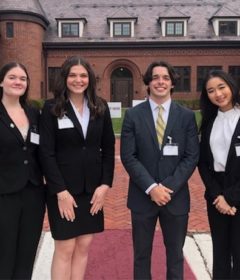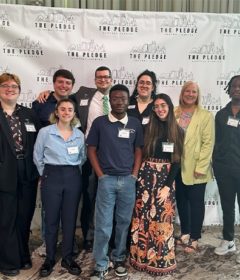Saving the Bees
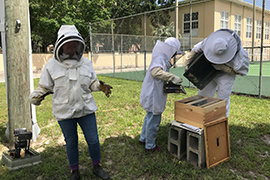
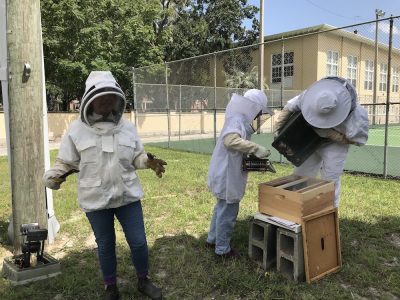
Classes haven’t started yet, but members of Stetson Beekeeping were busy at work Thursday afternoon relocating a hive of honeybees that had taken up residence near Cummings Gym.
Stetson Maintenance worker Kurt Looman spotted the bees buzzing around an electrical box along West University Avenue near Cummings Gym last week. He reported it to Stetson Pest Control Manager Chad Richards, who contacted the Gillespie Museum and Stetson Beekeeping, which keeps hives behind the museum.
On Thursday afternoon, Sarah Cramer, Ph.D., newly hired Brown Visiting Teacher-Scholar in Stetson’s Department of Environmental Science and Studies, donned a bee suit and joined members of Stetson Beekeeping to remove sections of honeycomb, crawling with bees, and gently carry each piece to a nearby bee box.
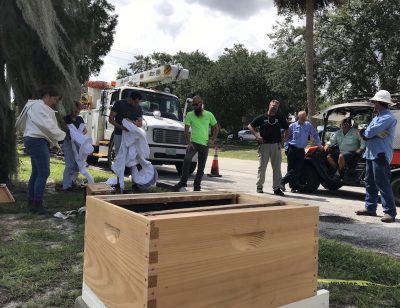
Stetson Beekeeping Founder Maxwell Droznin and junior Hannah Gurland helped to smoke the hive and lift out the honeycomb. By moving the honeycomb that contains the queen, the worker bees follow her scent and fly to their new home.
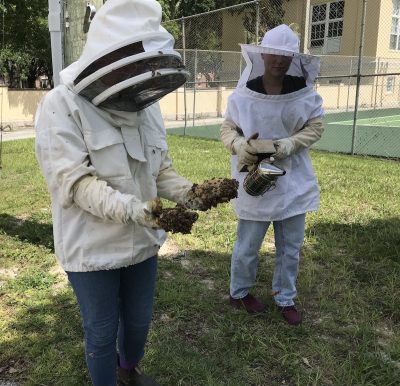
Cramer, an avid beekeeper, will help launch a new interdisciplinary program for the Fall Semester offering a minor in Sustainable Food Systems. She shared her wealth of knowledge about bees, as she moved the brood, explaining the process to the handful of people who gathered to watch.
“They’re very calm,” she said. “They were at their previous hive and they ran out of space and the old queen left with half of the bees and split in a swarm and landed here.”
Smoking the hive “covers up the smell of us, so they can’t smell humans,” she explained. “It also makes them think their homes is on fire, so they start eating any honey they have stored in preparation to leave. While they’re doing that, they’re distracted and then, just like people, when they eat a big meal, they get sleepy.”
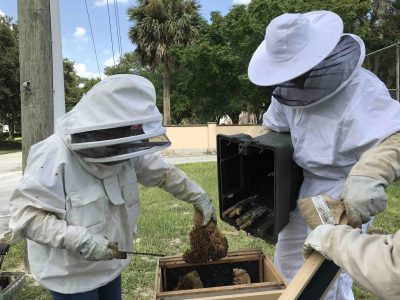 Stetson Beekeeping has maintained as many as four hives behind the Gillespie Museum and periodically has sold some of the 120 pounds of honey made by each hive annually, said Droznin, Community Engagement coordinator for Stetson’s Center for Community Engagement.
Stetson Beekeeping has maintained as many as four hives behind the Gillespie Museum and periodically has sold some of the 120 pounds of honey made by each hive annually, said Droznin, Community Engagement coordinator for Stetson’s Center for Community Engagement.
Currently, the group has one hive behind Gillespie, but the new one will arrive shortly, once the bees take up residence in their new box.


